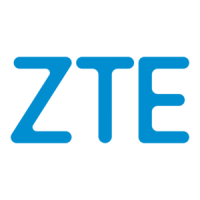21
Glossary
3G: Third Generation. 3G refers to the third generation of mobile telephony.
4G: Fourth Generation. 4G refers to the third generation of mobile telephony.
802.11(b, g, n): A set of WLAN communication standards in the 2.4, 3.6 and 5 GHz frequency bands.
Broadband: High-capacity high-speed, transmission channel with a wider bandwidth than conventional
modem lines. Broadband channels can carry video, voice, and data simultaneously.
DHCP: Dynamic Host Configuration Protocol. Software found in servers and routers that automatically
assigns temporary IP addresses to clients logging into an IP network.
DHCP Server: A server or service with a server that assigns IP addresses.
Firewall: A hardware or software boundary that protects a network or single computer from unwanted
outside traffic.
Firmware: A computer program embedded in an electronic device. Firmware usually contains operating
code for the device.
Hotspot: A Wi-Fi (802.11) access point or the area covered by an access point. Used for connecting to the
Internet.
HTTP: Hyper text Transfer Protocol. An application-level protocol for accessing the World Wide Web over
the Internet.
IEEE: Institute of Electrical and Electronics Engineers. An international technical/professional society that
promotes standardization in technical disciplines.
LAN: Local Area Network. A type of network that lets a group of computers, all in close proximity (such as
inside an office building), communicate with one another. It does not use common carrier circuits though it
can have gateways or bridges to other public or private networks.
MAC Address: Media Access Control. A number that uniquely identifies each network hardware device.
MAC addresses are 12-digit hexadecimal numbers. This is also known as the physical or hardware
address.
Port: A virtual data connection used by programs to exchange data. It is the endpoint in a logical
connection. The port is specified by the port number.
Port Forwarding: A process that allows remote devices to connect to a specific computer within a private
LAN.
Port Number: A 16-bit number used by the TCP and UDP protocols to direct traffic on a TCP/IP host.
Certain port numbers are standard for common applications.
Protocol: A standard that enables connection, communication, and data transfer between computing
endpoints.
Router: A device that directs traffic from one network to another.
SIM: Subscriber Identification Module. Found in GSM network technology, the SIM is a card containing
identification information for the subscriber and their account. The SIM card can be moved to different
devices.
SSID: Service Set IDentifier. The name assigned to a Wi-Fi network.
TCP/IP: Transmission Control Protocol/Internet Protocol. The set of communications protocols used for the
Internet and other similar networks.
USB: Universal Serial Bus. A connection type for computing device peripherals such as a printer, mobile
device, etc.
VPN: Virtual Private Network. A way to communicate through a dedicated server securely to a corporate
network over the Internet.
WAN: Wide Area Network. A public network that extends beyond architectural, geographical, or political
boundaries (unlike a LAN, which is usually a private network located within a room, building, or other
limited area).
WEP: Wired Equivalent Privacy. An IEEE standard security protocol for 802.11 networks. Superseded by
WPA and WPA2.
Wi-Fi: Wireless Fidelity. Any system that uses the 802.11 standard developed and released in 1997 by the
IEEE.
Wi-Fi Client: A wireless device that connects to the Internet via Wi-Fi.
WPA/WPA2: Wi-Fi Protected Access. A security protocol for wireless 802.11 networks from the Wi-Fi
Alliance.

